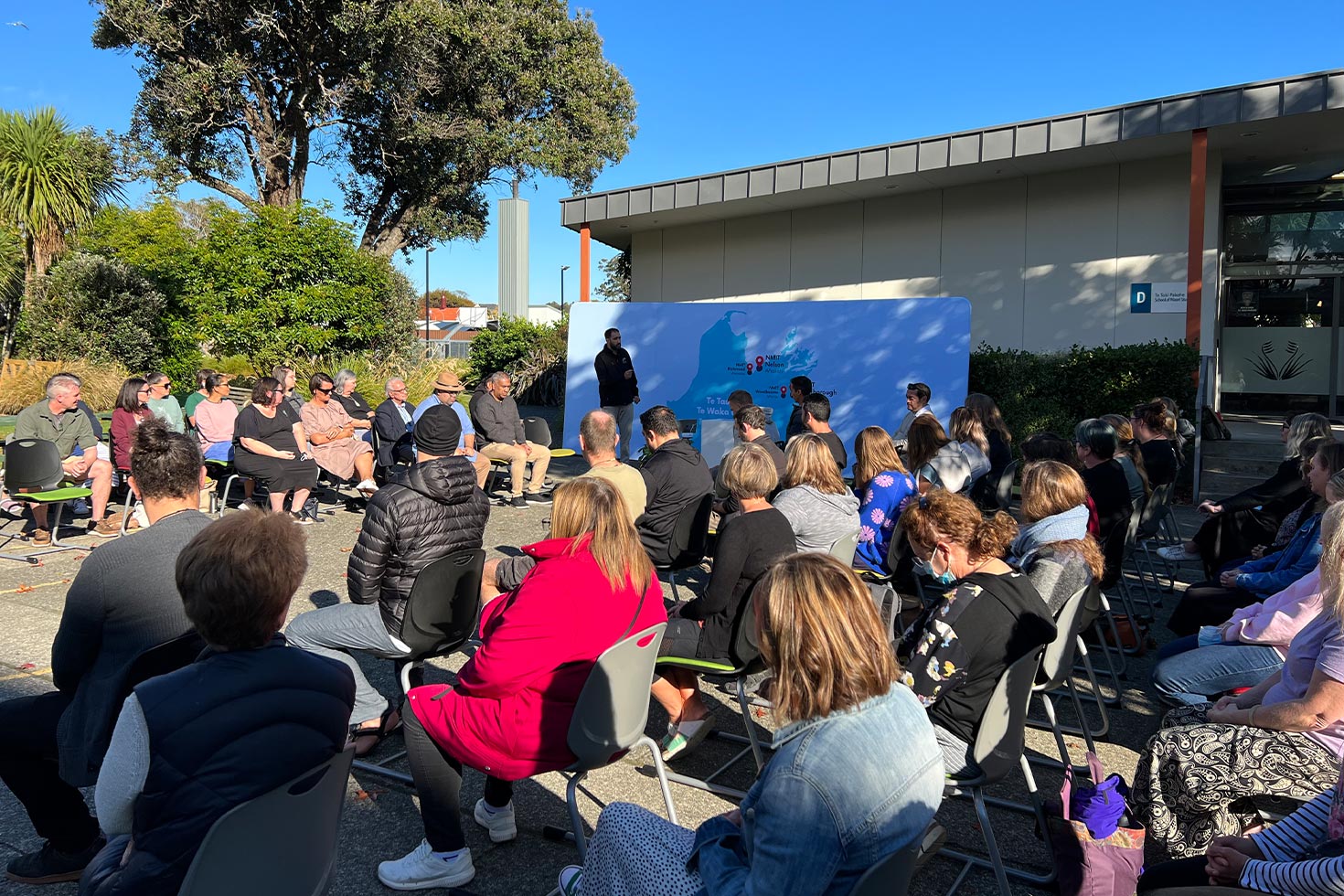Te Ahu o te Reo Māori — a pathway for te reo Māori

The Government-funded initiative aims to inspire and support teachers, leaders, kaiako and support staff, from early learning centres to secondary schools, to grow their capability and confidence in using and integrating te reo Māori into the learning of all ākonga.
NMIT is one of twelve providers in Aotearoa and delivers Te Ahu o te Reo Māori across Te Tauihu.
Kaiurungi (Project Manager) Adrienne Dawson says the programme had a slow beginning but has gathered momentum ever since.
“Every time we tried to start something Covid intervened so the first intake in November was pretty quiet,” she says. “However, they were an incredible group, so enthused and excited, they have been our biggest champions.”
The programme is open to anybody in the education workforce, including librarians, support staff, Board members, principals, teaching staff, volunteers and the wider whānau of the school.
“Basically, if you have an education connection and interest in language revitalisation for your school, you can come along,” says Adrienne.
Word of mouth grew the numbers in the February intake to around 200 students. These students have been really engaged despite having to do a lot online.
Kaihautū (programme leader) Tom Alesana helped design the curriculum and is mentoring the tutors and setting the educational direction of the programme. He also taught on the first wave.
“They were so eager, despite starting at the end of the year, dealing with Covid, and getting no release time from their workplace, they chose to do a reo programme,” says Tom.
“It shows their commitment to te reo Māori and tikanga Māori and the more they want, the more we want to give.”
Tom says each new intake, and as new Kaiako come on board, the energy stays the same.
“Everyone is there because they want to be. In the education workforce there is a real desire to not just have the basic reo— they want to know about local history and dialects, the stories, waiata and haka, and why people do things the way they do.”
Tom says you can’t learn the language without learning the culture and vice versa. So, the delivery of Te Ahu o te Reo Māori is done in a way that is applicable and useful.
“We give the learners practical things they can use, and it is quite responsive in the classroom. For instance, if we have an administrative person in the class, they get the language structures and the vocabulary, and we also shift the focus to make it useful for them.”
Tom acknowledges the work done by iwi representatives from Ngāti Kuia, Rangitāne o Wairau, Ngāti Apa ki te Rā Tō, Ngāti Rārua, Ngāti Koata, Ngāti Toa, Te Ātiawa and Ngāti Tama with the Ministry of Education to gain this ambitious and transformational programme.
“Our conversation with Iwi is about not trying to do everything but doing iwi narratives—who they are, their creation stories, stories that are pertinent to their tikanga. Once size does not fit all, they all have different perspectives. “
“With iwi there is not one truth, we acknowledge and celebrate all of the truths and we have to teach that to our students,” he says.
All kaiako on the programme have close a connection to the region, either as mana whenua or married to mana whenua.
The sentiment from the programme ākonga is this is ‘what they have been waiting for’. Te Ahu o te Reo Māori is not seen as an ‘extra’, but it complements the cultural responsiveness and the New Zealand histories curriculum.
“This is part of it’s the success—it is not an extra, it is part of all the other things.”
Tom says it’s not only the ākonga who are excited by the programme, but their wider whānau are pleased that their kids and their grandchildren will be on the receiving end of such a transformational programme.
Te Ahu o te Reo Māori is also attractive because it has no prerequisites, no assessments and it’s free.

